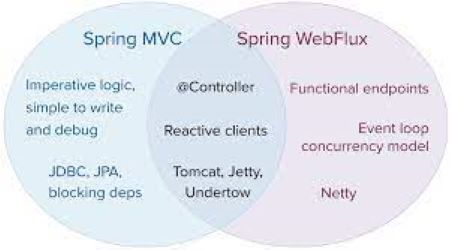Exploring the Differences: Is Spring WebFlux Better Than Spring MVC?
In the world of Java development, the Spring Framework has been a stalwart choice for building robust and scalable applications. With the advent of reactive programming, Spring introduced Spring WebFlux as an alternative to the traditional Spring MVC framework. The question that often arises is whether Spring WebFlux is truly better than Spring MVC. In this blog post, we will delve into the nuances of both frameworks and explore the scenarios where one might be more suitable than the other.
Understanding Spring MVC
Spring MVC, short for Model-View-Controller, has been the go-to framework for building web applications using the traditional synchronous approach. It’s based on the servlet architecture and follows the request-response model. Controllers handle incoming requests, process the logic, and return a view to the client. While Spring MVC offers great flexibility and a mature ecosystem, it can face challenges when handling a large number of concurrent requests due to its blocking nature.
Embracing Reactive Programming with Spring WebFlux
Spring WebFlux, on the other hand, embraces reactive programming, a paradigm designed to handle asynchronous and non-blocking operations efficiently. It is built on the reactive streams specification and supports reactive types like Flux and Mono. WebFlux is designed to handle high-concurrency scenarios by using fewer threads to manage more connections. This makes it particularly well-suited for applications requiring real-time data streaming, event-driven architectures, and scenarios with a high volume of I/O operations.
Essential Java and JVM Knowledge for Programmers: Navigating the Programming Landscape
When to Choose Spring WebFlux:
- High-Concurrency and Scalability: If your application is expected to handle a large number of concurrent users and requests, Spring WebFlux’s non-blocking nature can provide better scalability and resource utilization.
- Reactive Use Cases: Applications dealing with real-time data, IoT devices, or streaming services can benefit from WebFlux’s ability to efficiently handle asynchronous data flows.
- I/O-Intensive Operations: If your application involves frequent interactions with external services, databases, or APIs, Spring WebFlux’s non-blocking capabilities can prevent thread blocking and enhance performance.
- Future-Proofing: As the industry trends toward more reactive and asynchronous programming paradigms, adopting Spring WebFlux might future-proof your applications and align them with modern architectural approaches.
When to Choose Spring MVC:
- Existing Expertise and Ecosystem: If your development team is already well-versed in Spring MVC and you’re working on a project with relatively straightforward requirements, sticking with Spring MVC might be a pragmatic choice.
- Blocking Operations: For applications where the majority of operations are CPU-bound rather than I/O-bound, Spring MVC’s synchronous nature might be sufficient and simpler to work with.
- Mature Libraries and Integrations: Spring MVC benefits from a rich set of libraries, plugins, and integrations that might not be as readily available for Spring WebFlux.
- Compatibility: If you’re working on an application that requires integration with legacy systems or libraries that aren’t built for reactive programming, Spring MVC might be a better fit.
comparison table between Spring WebFlux and Spring MVC:
| Aspect | Spring WebFlux | Spring MVC |
|---|---|---|
| Programming Paradigm | Reactive (asynchronous, non-blocking) | Synchronous |
| Use Case | High-concurrency, real-time data | Traditional web applications |
| Thread Management | Fewer threads, efficient for I/O | Thread-per-request model |
| Controller Type | Annotated Controllers | Annotated Controllers |
| Data Types | Flux (multi-value) and Mono (single-value) | POJOs (Plain Old Java Objects) |
| Request Mapping | Router Functions and Annotations | Annotations (e.g., @RequestMapping) |
| Response Type | Non-blocking | Blocking |
| Reactive Streams | Supported (Flux and Mono) | Not natively supported |
| Database Interaction | Reactive Repositories | Traditional JPA repositories |
| Threading Model | Event-loop driven | Thread-per-request |
| Performance | High-concurrency scenarios | Standard concurrency |
| Scalability | Excellent | Good |
| Learning Curve | Moderate (due to reactive concepts) | Moderate (familiar Spring concepts) |
| Third-party Integration | Some libraries may require adaptation | Widely compatible |
| Community and Ecosystem | Growing | Mature and well-established |
The choice between Spring WebFlux and Spring MVC depends on the specific needs of your application. Spring WebFlux offers the advantages of reactive programming, making it a strong contender for high-concurrency and real-time use cases. On the other hand, Spring MVC provides familiarity, a mature ecosystem, and compatibility with existing libraries. Evaluating your project’s requirements and your team’s expertise will help you make an informed decision about which framework to choose.

